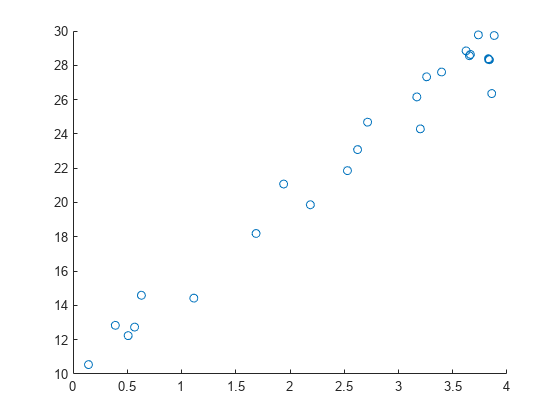invpred
Inverse prediction
Syntax
X0 = invpred(X,Y,Y0)
[X0,DXLO,DXUP] = invpred(X,Y,Y0)
[X0,DXLO,DXUP] = invpred(X,Y,Y0,name1,val1,name2,val2,...)
Description
X0 = invpred(X,Y,Y0)
accepts vectors X and Y of the
same length, fits a simple regression, and returns the estimated value X0 for
which the height of the line is equal to Y0. The
output, X0, has the same size as Y0,
and Y0 can be an array of any size.
[X0,DXLO,DXUP] = invpred(X,Y,Y0)
also computes 95% inverse prediction intervals. DXLO and DXUP define
intervals with lower bound X0–DXLO and upper
bound X0+DXUP. Both DXLO and DXUP have
the same size as Y0.
The intervals are not simultaneous and are not necessarily finite.
Some intervals may extend from a finite value to -Inf or +Inf,
and some may extend over the entire real line.
[X0,DXLO,DXUP] = invpred(X,Y,Y0, specifies
optional argument name/value pairs chosen from the following list.
Argument names are case insensitive and partial matches are allowed.name1,val1,name2,val2,...)
| Name | Value |
|---|---|
'alpha' | A value between 0 and 1 specifying a confidence level
of |
'predopt' | Either |
Examples
Version History
Introduced before R2006a
